The limit concept is certainly indispensable for the development of analysis, for convergence and divergence of infinite series also depend on this concept. The theory of limits and then defining continuity, differentiability and the definite integral in terms of the limit concept is successfully executed by mathematicians. In this section, you will study this concept in detail with the help of solved examples.
What Are Limits?
The expression
The neighbourhood of a point:
Let ‘a’ be real number and ‘h; is very close to ‘O’, then
The left-hand limit will be obtained when x = a – h or x -> a–
Similarly, the right-hand limit will be obtained when x = a + h or x -> a+
Related Concepts:
- Functions
- Limits, Continuity and Differentiability
- Differentiation
- Applications of Derivatives
Existence of Limit
The limit will exist if the following conditions get fulfilled:
(a)
(b) Both LHL & RHL should be finite.
Examples
-
- \(\begin{array}{l}\underset{x\to 1}{\mathop{\lim }}\,\,{{x}^{2}}+1={{1}^{2}}+1=2\end{array} \)
- \(\begin{array}{l}\underset{x\to 0}{\mathop{\lim }}\,\,{{x}^{2}}-x={{0}^{2}}-0=0\end{array} \)
- \(\begin{array}{l}\underset{x\to 2}{\mathop{\lim }}\,\,\frac{{{x}^{2}}-4}{x+3}=\frac{4-4}{2+3}=0\end{array} \)
(c) In limits, we have in determinant forms such as
In these cases, we try to simplify the problem into a valid function.
Watch This Video for More Reference
Calculus Problems

Expected Questions and Solutions
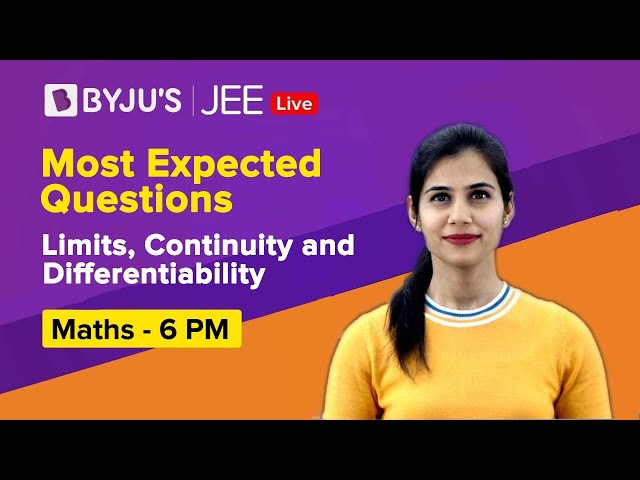
Use of Expansion in Evaluating Limits
Some Important Expansions
- \(\begin{array}{l} \log (1+x)=x-\frac{{{x}^{2}}}{2}+\frac{{{x}^{3}}}{3}-\frac{{{x}^{4}}}{4}+…….\end{array} \)
- \(\begin{array}{l}{{e}^{x}}=1+x+\frac{{{x}^{2}}}{2!}+\frac{{{x}^{3}}}{3!}-\frac{{{x}^{4}}}{4!}+…….\end{array} \)
- \(\begin{array}{l}{{a}^{x}}=1+x\log a+\frac{{{x}^{2}}}{2!}{(log\;a)}^{2}+…….\end{array} \)
- \(\begin{array}{l}\sin x=x-\frac{{{x}^{3}}}{3!}+\frac{{{x}^{5}}}{5!}……\end{array} \)
- \(\begin{array}{l}\cos x=1-\frac{{{x}^{2}}}{2!}+\frac{{{x}^{4}}}{4!}……\end{array} \)
- \(\begin{array}{l}\tan x=x+\frac{{{x}^{3}}}{3}+\frac{2}{15}{{x}^{5}}+……\end{array} \)
Some Important limits
- \(\begin{array}{l}\underset{x\to 0}{\mathop{\lim }}\,\,\,\,\frac{\sin x}{x}=1\end{array} \)
- \(\begin{array}{l}\underset{x\to 0}{\mathop{\lim }}\,\,\,\,\frac{1-\cos x}{{{x}^{2}}}=\frac{1}{2}\end{array} \)
- \(\begin{array}{l}\underset{x\to 0}{\mathop{\lim }}\,\,\,\,\frac{\tan x}{x}=1\end{array} \)
- \(\begin{array}{l}\underset{x\to 0}{\mathop{\lim }}\,\,\,\,\frac{{{e}^{x}}-1}{x}=1\end{array} \)
- \(\begin{array}{l}\underset{x\to 0}{\mathop{\lim }}\,\,\,\,\frac{\log (1+x)}{x}=1\end{array} \)
Example: Solve
Solution:

Evaluation of Algebraic Limits
Direct substitution method
Example 1:
Example 2:
Factorisation method
Example:
Solution:
Rationalisation method
Example:
Solution:

Using Result:
Example:

Continuity
What Is Continuity?
A continuous function is a function for which small changes in the input results in small changes in the output. Otherwise, a function is said to be discontinuous.
A function f(x) is said to be continuous at x = a if
i.e., LHL = RHL = value of the function at x = a
Else, a function f(x) is said to be a discontinuous function.
Example 1:
Solution: Clearly, the function will be not defined for
Function is discontinuous for
Example 2: What value must be assigned to K so that the function
Solution:
Example 3: Discuss the continuity of
(a) Sgn (x3 – x)
(b)
Solution:
(a) f(x) = sgn (x3–x)
Here, x3 – x = 0, so, x =0, –1, 1
Hence, f(x) is discontinuous at x = 0, 1, –1
(b)
Hence,
When 2/(1 + x2) is on integer
Example 4: Discuss the continuity of
Solution:
Intermediate Value Theorem
If f is continuous on [a, b] and f(a) ≠ f(b), then for any value c ∈ (f(a), f(b)), there is at least one number in x0 (a, b) for which f(x0) = c
Limits, Continuity and Differentiability JEE Main Questions
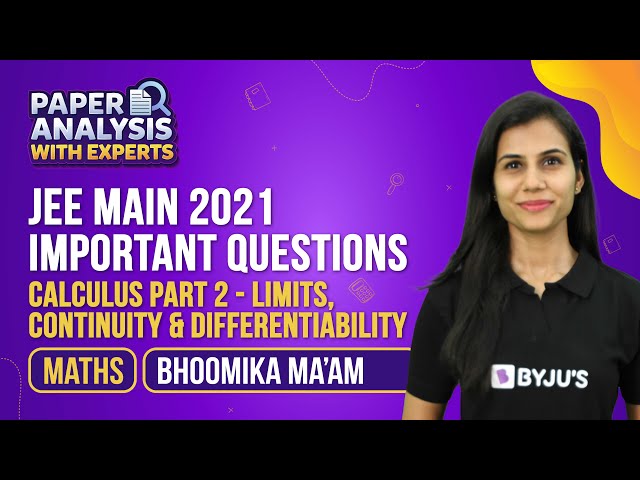
12 Must-Do JEE Questions of Limits Continuity and Differentiability
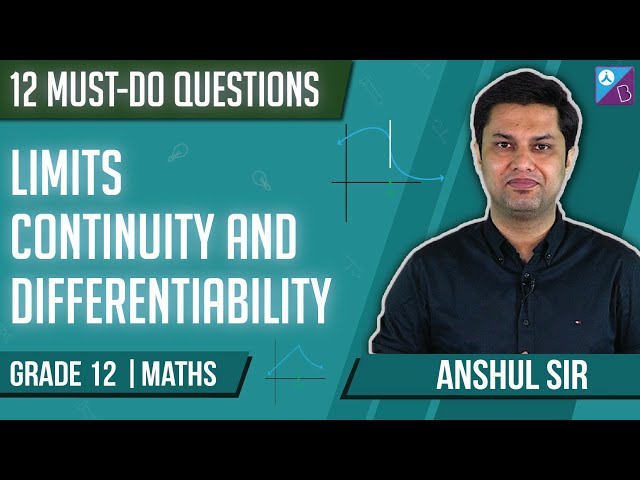
Differentiability
A function, say f(x), is said to be differentiable at the point x = a if the derivative f ‘(a) exists at every point in its domain.
Existence of Derivative
Right and left-hand derivative
RHD: f’(0+) =
LHD: F’
How can a function fail to be differentiable?
The function f(x) is said to be non-differentiable at x = a, if
(a) Both RHD & LHD exist but are not equal
(b) Either or both RHD & LHD are not finite
(c) Either or both RHD & LHD do not exist.
Video Lesson:
Limits, Continuity and Differentiability – Part 1
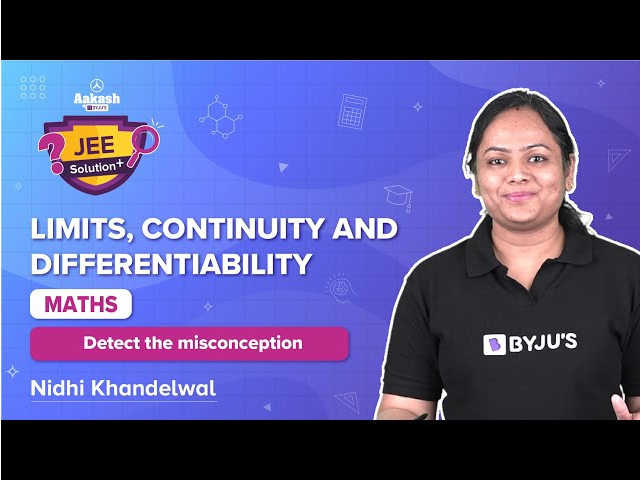
Limits, Continuity and Differentiability – Part 2

Limits, Continuity and Differentiability – Important Topics

Limits, Continuity and Differentiability – Important Questions
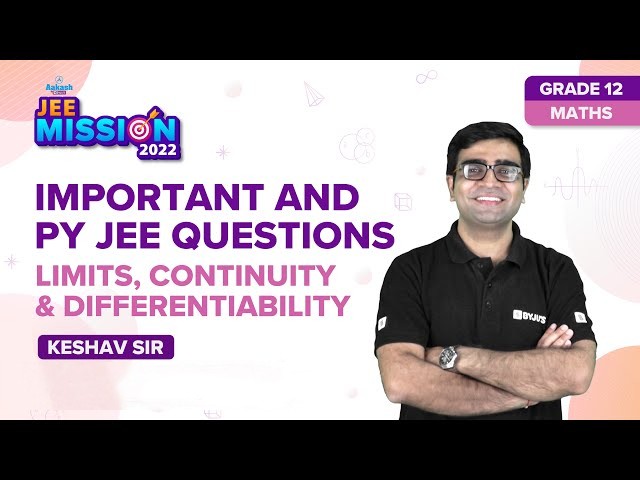
Limits, Continuity and Differentiability – Revision Lesson Part 1
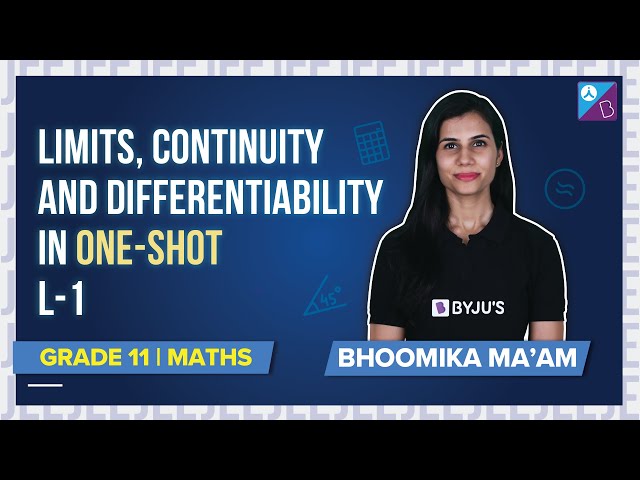
Limits, Continuity and Differentiability – Revision Lesson Part 2
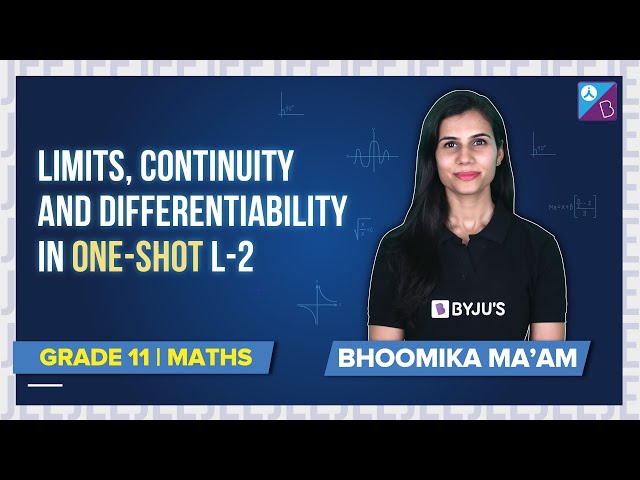
Continuity of a Function
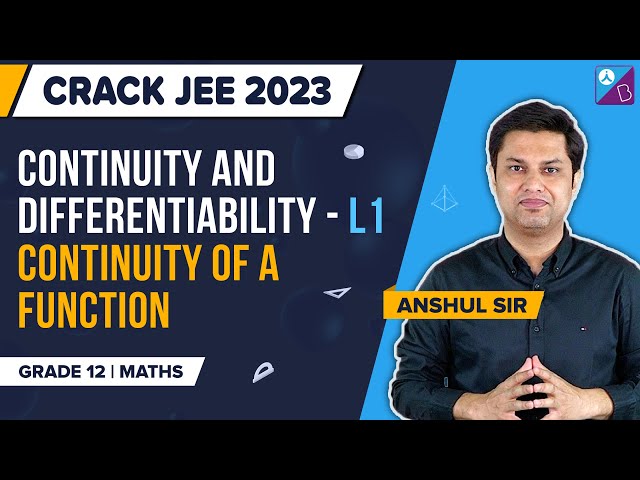
Theorems on Continuity
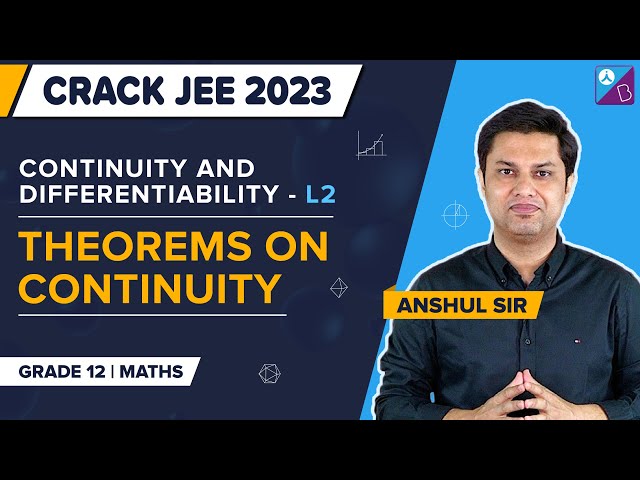
Differentiability and Its Conditions
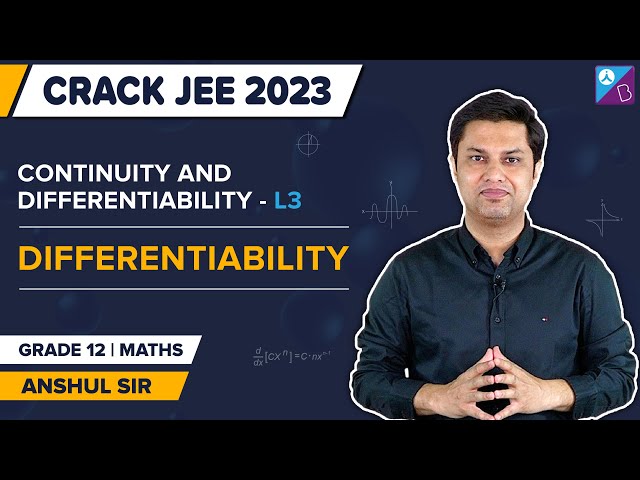
Differentiability in an Interval
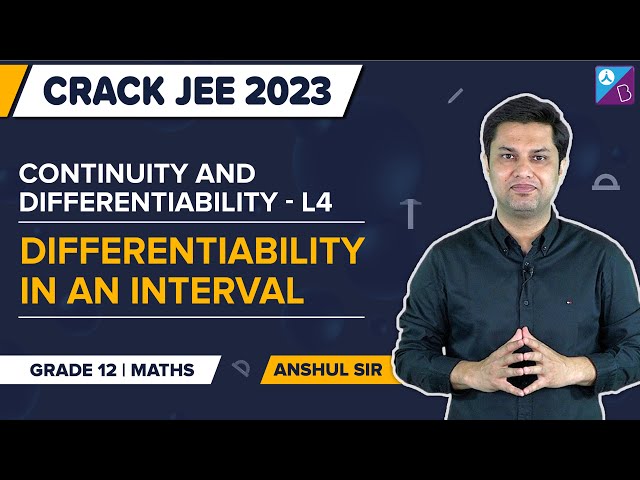
Frequently Asked Questions
Give the definition of continuous function in Mathematics.
A function is said to be continuous at a point x = a, if limx→a f(x) exists and limx→a f(x) = f(a).
What do you mean by differentiability?
A function f(x) is said to be differentiable at the point x = a if the derivative f’(a) exists at every point in its domain.
How do you check the continuity of a function f(x) at x = a?
We have to check the left-hand limit and right-hand limit and the value of the function at a point x=a. If LHL = RHL = value of the function at x = a, then the function is continuous at x = a.
What do you mean by the second derivative of a function?
The second derivative is the derivative of a function. We denote the second derivative of f(x) by f’’(x).
Are continuity and differentiability related?
Yes, if a function is differentiable at any point in its domain, it will be continuous at that point; vice versa, it is not always true.
What is the value of limx→ 0(log (1+x)/x)?
The value of limx→ 0(log (1+x)/x) = 1.
What is the value of limx→ 0 (ex-1)/x?
The value of limx→ 0 (ex-1)/x = 1.
Is a continuous function always differentiable?
A continuous function need not be differentiable. If a function f(x) is differentiable at point a, then it is continuous at point a. But the converse is not true.
Comments